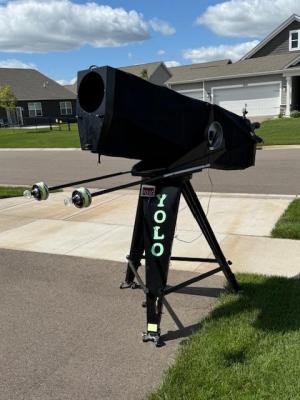You’ve got a laser cutter. You’ve got a 3D printer. What do you make? [Ayushmaan45] suggests a telescope. The modest instrument isn’t going to do serious astronomy with only 8X worth of optics, but it would make a fine spyglass for a youngster.
The body is cut from MDF, and there are only a few 3D printed parts. The only other things you need are rubber bands and a pair of lenses. You don’t even need glue. We might have spray painted the inside of the scope black or used some black contact paper to cut down on reflections, although it probably wouldn’t make much difference.
Of course, depending on your lenses, you may have to make some changes. Or find new lenses, for that matter. We like that it doesn’t take any exotic parts. We also appreciate that it is easy for kids to take apart and put back together. It would be interesting to see how a motivated kid might alter the design, as well.
If a kid gets interested, you could move on to a more sophisticated telescope. Or maybe you’d prefer a nice microscope.


















